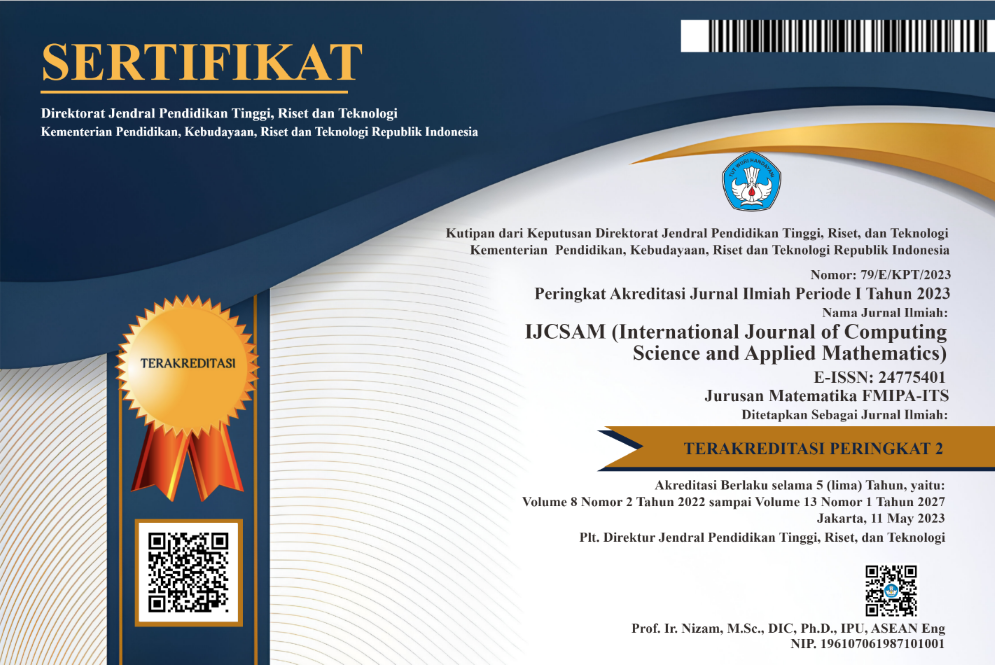Weight Optimization of Optimal Control Influenza Model Using Artificial Bee Colony
Abstract
Keywords
Full Text:
PDFReferences
“Influenza,” http://en.wikipedia.org/wiki/influenza, accessed: 2017-07-01.
M. Hia, O. Balatif, M. Rachik, and J. Bouyaghroumni, “Application of optimal control theory to an seir model with immigration of infectives,” IJCSI International Journal of Computer Science Issues, 2013.
E. Bakare, A. Nwagwo, and E. Danso-Addo, “Optimal control analysis of an sir epidemic model with constant recruitment,” International Journal of Applied Mathematical Research, vol. 3, no. 3, pp. 273–285, 2014.
Z. Michalewicz, C. Janikow, and J. Krawczyk, “A modified genetic algorithm for optimal control problems,” Computers & Mathematics with Applications, vol. 23, no. 12, pp. 83–94, 1992.
D. Karaboga and B. Basturk, “A powerful and efficient algorithm for numerical function optimization: artificial bee colony (abc) algorithm,” Journal of global optimization, vol. 39, no. 3, pp. 459–471, 2007.
J. Burl, Linear optimal control: H (2) and H (Infinity) methods. Addison-Wesley Longman Publishing Co., Inc., 1998.
D. Rahmalia and T. Herlambang, “Application ant colony optimization on weight selection of optimal control seir epidemic model,” in Proceeding the 7th Annual Basic Science International Conference, Dec. 2017, pp. 196–199.
T. Liao, D. Aydin, and T. Stutzle, “Artificial bee colonies for continuous optimization: Experimental analysis and improvements,” Swarm Intelligence, vol. 7, no. 4, pp. 327–356, 2013.
O. Sharomi and T. Malik, “Optimal control in epidemiology,” Annals of Operations Research, vol. 251, no. 1-2, pp. 55–71, 2017.
DOI: http://dx.doi.org/10.12962/j24775401.v4i1.2997
Refbacks
- There are currently no refbacks.
View My Stats

International Journal of Computing Science and Applied Mathematics by Pusat Publikasi Ilmiah LPPM, Institut Teknologi Sepuluh Nopember is licensed under a Creative Commons Attribution-ShareAlike 4.0 International License.
Based on a work at https://iptek.its.ac.id/index.php/ijcsam.






